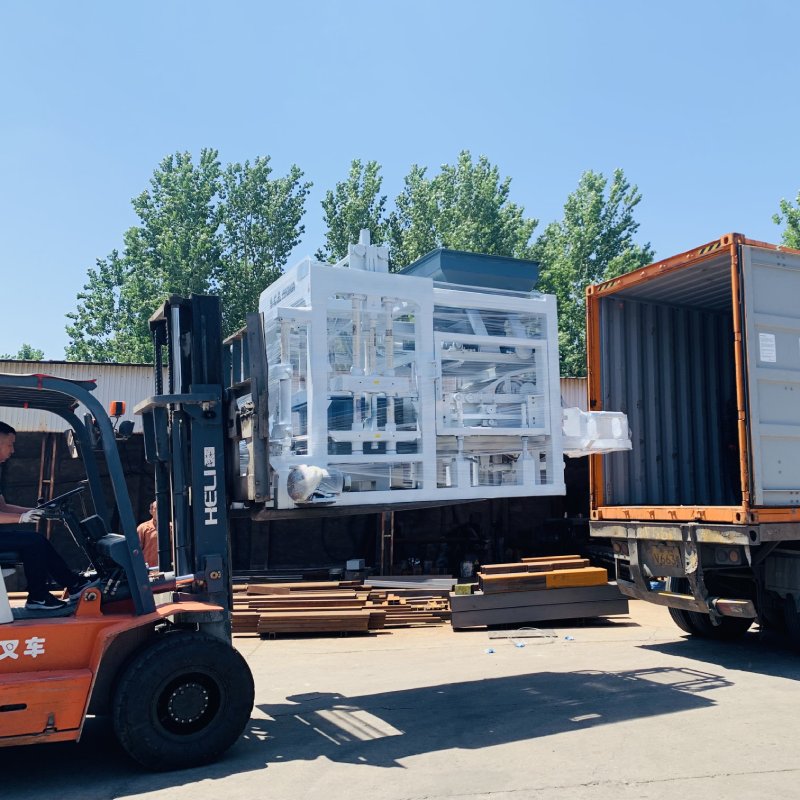
Image source Aiwei Block Machine
Eco-Friendly Block Machines on the Rise in the Construction Sector
Introduction
The global construction sector faces growing pressures to adopt sustainable practices and reduce its environmental impact. In response to these challenges, eco-friendly block machines have emerged as a revolutionary solution. These machines aim to transform the traditional brick and block production process by incorporating environmentally conscious materials, energy-efficient technologies, and sustainable manufacturing methods. In this article, we explore the rise of eco-friendly block machines in the construction sector, their impact on sustainability, and the benefits they offer to builders, developers, and the environment.
- The Need for Sustainable Construction Practices
The construction industry has historically been associated with high energy consumption, significant waste generation, and carbon emissions. As the demand for construction materials continues to rise, the industry faces mounting pressure to adopt eco-friendly practices. Eco-friendly block machines offer a sustainable alternative to traditional methods, addressing environmental concerns and helping the industry transition towards a greener future.
- Understanding Eco-Friendly Block Machines
Eco-friendly block machines are designed to reduce their environmental impact throughout the production process. They utilize recycled materials, eco-friendly additives, and energy-efficient mechanisms to create bricks and blocks that are durable, cost-effective, and sustainable. These machines play a vital role in promoting circular economy principles and reducing the consumption of finite resources.
- Utilizing Recycled Materials
One of the key features of eco-friendly block machines is their ability to utilize recycled materials as aggregates in the block production process. By using materials such as crushed concrete, fly ash, or recycled plastics, these machines help divert waste from landfills and reduce the demand for virgin resources, thereby contributing to a more circular economy.
- Sustainable Additives and Binders
Eco-friendly block machines often incorporate sustainable additives and binders in the block manufacturing process. These additives can include natural fibers, bio-based resins, and geopolymer binders, which have a lower carbon footprint compared to traditional cement-based binders. This results in bricks and blocks that are not only eco-friendly but also exhibit excellent mechanical properties.
- Energy-Efficient Manufacturing
Modern eco-friendly block machines are designed to minimize energy consumption during production. Advanced technologies, such as high-pressure compaction and automation, optimize energy usage, reducing greenhouse gas emissions and overall operational costs.
- Advantages of Eco-Friendly Block Machines
Eco-friendly block machines offer numerous advantages over conventional block-making technologies. These benefits include reduced environmental impact, lower production costs, enhanced block quality, and compliance with green building standards. Additionally, the use of eco-friendly blocks can contribute to achieving green building certifications such as LEED and BREEAM.
- Green Building Compliance and Incentives
As governments worldwide prioritize sustainable development, many countries are incentivizing the adoption of green building practices. Eco-friendly block machines provide construction companies with a competitive edge by helping them comply with sustainability standards and gain access to green building incentives and certifications.
- Resilient and Durable Structures
Eco-friendly blocks manufactured by these machines often exhibit superior properties, including better thermal insulation, reduced water absorption, and higher compressive strength. This results in more durable and resilient structures, reducing maintenance costs and increasing the lifespan of buildings.
- Adoption Challenges and Solutions
While eco-friendly block machines offer substantial benefits, their widespread adoption faces certain challenges. These include initial costs, limited awareness among construction professionals, and variations in regional regulations. To overcome these hurdles, governments, NGOs, and industry stakeholders must collaborate to promote sustainable construction practices and provide incentives for adopting eco-friendly technologies.
- Future Trends and Conclusion
The rise of eco-friendly block machines in the construction sector is a positive sign for the industry’s sustainable future. As technology continues to evolve and awareness of environmental concerns grows, these machines will play an increasingly critical role in reducing the construction sector’s ecological footprint. By embracing eco-friendly block machines, the construction industry can pave the way towards a more sustainable, resilient, and greener built environment for generations to come.
Conclusion
Eco-friendly block machines represent a game-changing innovation in the construction sector. These machines not only contribute to reduced waste and lower carbon emissions but also enhance the quality and durability of construction materials. The rise of eco-friendly block machines signifies a shift towards sustainable construction practices, aligning with global efforts to combat climate change and promote green building initiatives. By embracing these technologies, the construction industry can take significant strides towards building a more sustainable and resilient future. As the demand for eco-friendly materials and technologies continues to grow, it is essential for stakeholders to collaborate, invest in research and development, and create an enabling environment for the widespread adoption of eco-friendly block machines. The journey towards a greener construction sector has begun, and eco-friendly block machines are leading the way.
.
